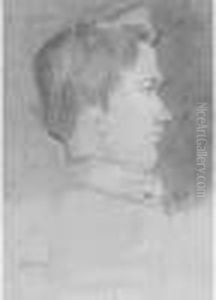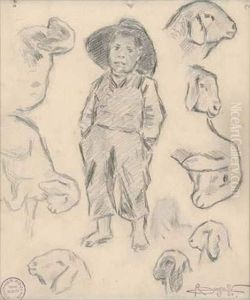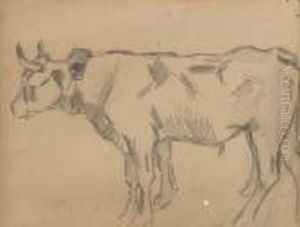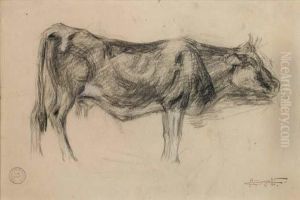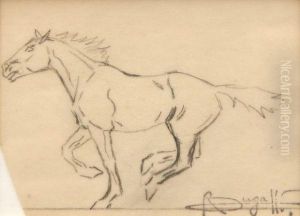Rembrandt Bugatti Paintings
Rembrandt Bugatti was an Italian sculptor known for his bronze sculptures of wildlife, capturing the essence and movement of his subjects with a raw and expressive realism. Born on October 16, 1884, in Milan, Italy, he was part of an artistically gifted family; his father was the famous Art Nouveau furniture and jewelry designer Carlo Bugatti, and his brother was the renowned automobile designer Ettore Bugatti.
From a young age, Rembrandt showed an extraordinary talent for sculpting and drawing animals. His deep affection for the natural world was evident in his later works. He studied at the Brera Academy in Milan before moving to Paris, which was then the center of the art world. There, he became associated with the wildlife park at the Jardin des Plantes, where he could study and sketch animals in close proximity.
Bugatti's sculptures are characterized by their vitality and attention to the particularities of each animal, capturing them in their most characteristic poses with a sensitivity to their mood and movement. Unlike many of his contemporaries who were moving towards abstraction, Bugatti maintained a naturalistic approach to his subjects. His work was well-received, and he exhibited with success at the Salon d'Automne in Paris and elsewhere in Europe.
Despite his success, Bugatti's life was marked by tragedy. The onset of World War I and the personal difficulties he faced, including the suffering of the animals he loved during the war, deeply affected him. Distraught and suffering from depression, Bugatti took his own life on January 8, 1916, at the age of 31.
Today, Rembrandt Bugatti's works are highly prized by collectors and are held in many major museums around the world. His sculptures remain a testament to his profound empathy for the natural world and his exceptional ability to render its beauty in bronze.
